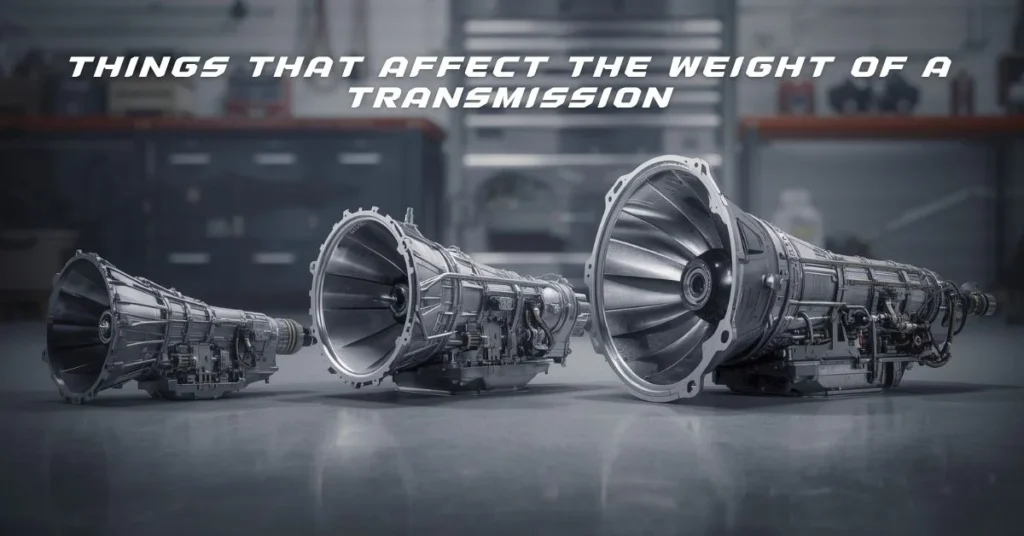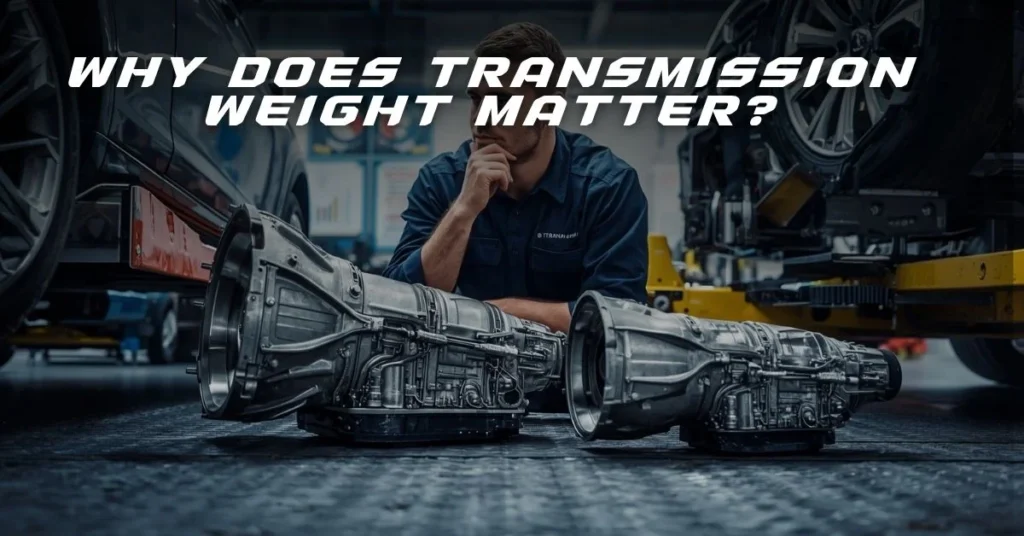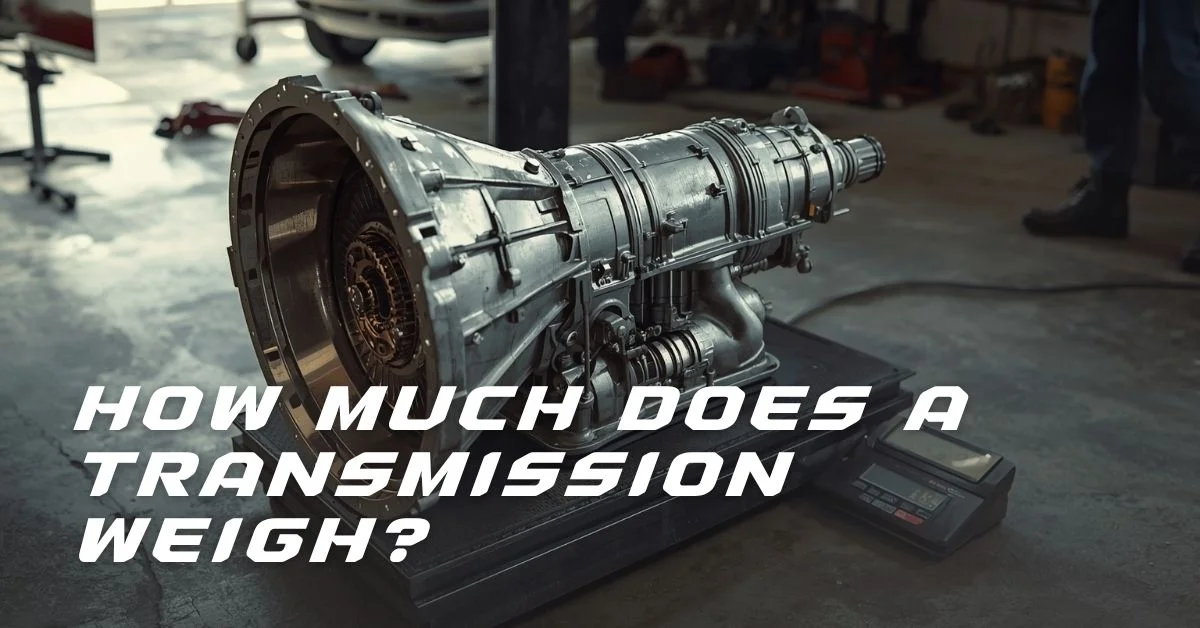What do you think of when you think of how a car works? For a lot of people, it’s the engine, the power, and the torque. But the transmission is another important part that affects not just how the automobile runs, but also how well it works and how well it stays balanced. A lot of mechanics, racers, and automobile owners want to know, “How much does a transmission weigh?” The answer isn’t easy because the weight changes a lot depending on the kind, size, and materials.
There are a number of reasons why it’s crucial to know how much a transmission weighs. For people who care about performance, every pound counts. Weight has an effect on how fast a car can go, how well it handles, and how much gas it uses. For mechanics and others who like to do things themselves, understanding the weight is important for safely handling, installing, and picking the correct tools for a job. This book will give you a full look into transmission weights, including what affects them and why this information is useful for anyone who wants to know how a car works.

Things that affect the weight of a transmission
There is no one number that fits all for the weight of a transmission. There are a number of important things that affect its final mass. You need to think about the transmission’s design, materials, and intended use while trying to figure out how much it weighs.
Type of transmission
The most significant factor is the type of transmission. Automatic, manual, Continuously Variable Transmissions (CVT), and Dual-Clutch Transmissions (DCT) all have different internal components and complexities, which directly impact their weight.
Manual Transmissions: Most of the time, manual gearboxes are the lightest. Compared to automatic ones, they are easier to understand and have fewer moving parts. They don’t have the complicated hydraulic systems and heavy torque converter that automatics have.
Automatic transmissions: These are usually the heaviest. They have a torque converter, a planetary gear system, and a complicated valve body with hydraulic controls, all of which make them very heavy.
CVTs and DCTs: A lot of the time, these new transmissions are somewhere in the center. A DCT can be rather light given the performance it gives, but the dual-clutch system makes it heavier than a regular manual. CVTs have a pulley system that can be lighter than the gearsets in a regular automatic, but the weight of the CVT depends on the design and the car it is made for.
Vehicle Size and Application
The weight of the transmission depends a lot on the vehicle it is made for. A transmission for a little automobile will be much lighter than one for a heavy-duty pickup truck.
Light-duty vehicles: Such cars and compact SUVs, have smaller, lighter transmissions that can manage less power and torque.
Heavy-Duty Vehicles: Trucks and big SUVs need strong gearboxes that can handle high torque loads when towing and carrying. These units are a lot heavier since they have bigger gears, stronger casings, and bigger internal parts.
Materials Used in Construction
The materials chosen for the transmission’s case and internal parts are another critical factor.
Casing: To keep the weight down, most gearbox cases are built of aluminum alloy. Some older or heavy-duty transmissions, on the other hand, may use cast iron, which is significantly heavier but stronger and lasts longer.
Internal Components: Usually, the gears, shafts, and other pieces inside are composed of strong steel. The overall weight is directly affected by the size and number of these parts.
Additional Features and Technology
A lot of modern transmissions include extra features that make them heavier. For example, all-wheel drive (AWD) systems need a transfer case to be built into or linked to the transmission, which adds a lot of weight. Advanced cooling systems and computerized control devices also add to the final score.
Transmission Weight Comparison
To help you understand better, let’s look at some common weight ranges for different sorts of transmissions. The table below shows a basic comparison of transmission weights, however these are just approximations. The actual weight may differ depending on the make and model.
| Transmission Type | Typical Weight Range (Dry) | Common Applications |
| Manual (4-5 Speed) | 75 – 125 lbs (34 – 57 kg) | Compact Cars, Sports Cars |
| Manual (6+ Speed) | 100 – 160 lbs (45 – 73 kg) | Modern Sports Cars, Performance Sedans |
| Automatic (3-4 Speed) | 120 – 200 lbs (54 – 91 kg) | Older Sedans, Light Trucks |
| Automatic (6-10 Speed) | 180 – 300+ lbs (82 – 136+ kg) | Modern SUVs, Trucks, Luxury Cars |
| CVT | 150 – 250 lbs (68 – 113 kg) | Economy Cars, Crossovers |
| DCT | 150 – 220 lbs (68 – 100 kg) | Performance Cars, Modern Sedans |
| Heavy-Duty Truck | 300 – 800+ lbs (136 – 363+ kg) | Commercial Trucks, Heavy-Duty Pickups |
Note: “Dry weight” refers to the transmission’s weight without any fluid. Transmission fluid can add another 10 to 30 pounds (4.5 to 13.6 kg), depending on the system’s capacity.
Manual vs Automatic Transmission Weight
When it comes to driving enjoyment and performance, the discussion between manual and automatic gearboxes is often about those things. One of the most important things to talk about is weight.
A 6-speed Getrag MT82 manual transmission for a Ford Mustang weights about 120 pounds. The 10-speed automatic (10R80) that comes with the identical automobile, on the other hand, weighs more than 230 lbs, which is almost twice as much.
This big difference changes how the weight is spread out in the car and the power-to-weight ratio. Choosing a manual gearbox can help a race car or a high-performance sports car lose 100 pounds, which can make a big difference in how fast it goes and how well it handles.

Why Does Transmission Weight Matter?
Now that we have an idea of how much a transmission weighs, let’s explore why this information is so practical.
- Performance and Efficiency:In vehicle dynamics, weight makes things worse. A automobile that is lighter can go quicker, stop faster, and turn better. Making a big part like the transmission lighter helps the whole thing work better. It also helps save gas because the engine has less weight to move.
- Installation and Maintenance: For mechanics, knowing how much the transmission weighs is important for safety and planning. It is very important to use the right transmission jack and be careful when taking out or putting in a 200-pound automatic transmission to avoid hurting yourself or damaging the automobile.
- Vehicle Balance: The transmission is a big part that is in the middle of the car. The weight of the vehicle affects its center of gravity and the way weight is distributed from front to back. To get the right handling, engineers spend a lot of time fine-tuning this balance. Changing a transmission with one that is much heavier or lighter can change this balance, which could affect the car’s stability.
- Shipping and Logistics: The weight will directly affect the shipping cost if you are buying a used transmission or sending one to be rebuilt. If you can give an accurate weight, you won’t have to pay extra expenses.
Conclusion
So, how much does a transmission weigh? The answer, as we’ve seen, is “it depends.” A small car’s lightweight manual gearbox might weigh as little as 75 pounds, whereas a commercial truck’s heavy-duty automatic transmission could weigh more than 800 pounds. The kind of transmission, the car it’s meant for, and the materials utilized to make it are all very important.
Knowing how much a transmission weighs helps you understand how much work goes into making each car. It affects everything from fuel economy and performance to the problems that come up when you have to fix or maintain it. If you’re a professional technician planning a difficult job or an enthusiast trying to cut seconds off your lap time, it’s helpful to know how much this important part weighs.
What have your experiences been with handling or changing transmissions? Leave your comments below to share your opinions or questions!
Frequently Asked Questions
Does transmission weight affect performance?
Yes, absolutely. A lighter transmission boosts power-to-weight ratio and acceleration. Reduced curb weight may improve handling, braking, and fuel efficiency. This is why many performance cars have lighter manual transmissions.
How do I find the exact weight of my car’s transmission?
The factory service handbook for your car is most accurate. Search internet forums for your car’s make and model, since other owners or mechanics may have weighed it during a swap or repair. Finally, component manufacturers sometimes post specs online.
Is a heavier transmission always stronger?
A correlation is often seen. To accommodate massive torque, heavy-duty gearboxes require larger, stronger internal components and cast iron housing. Modern engineering can make sturdy, lightweight transmissions using new alloys and efficient designs.
Does transmission fluid add a lot of weight?
Adds significantly. Automatic gearboxes hold 10–20 liters of fluid. At 1.8 pounds per quart, ATF can add 18 to 36 pounds (8 to 16 kg) to the total weight. Always drain fluid before removing a transmission.

